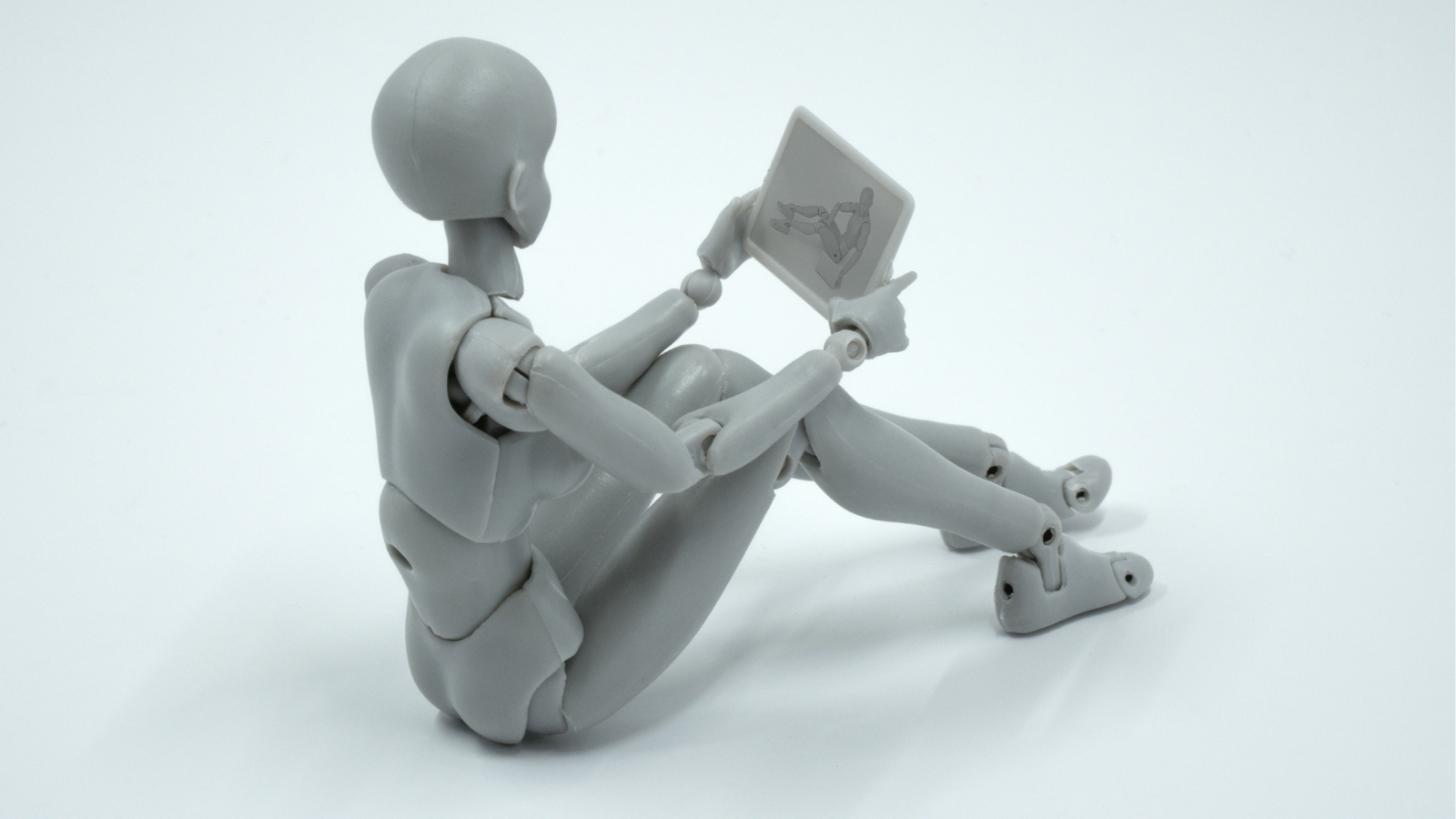
Every year the cycle begins again. Wanting to better ourselves, we make all sorts of resolutions...or is it intentions? Plans? Goals? It’s hard to know because these terms are often used interchangeably. The question is: are they the same thing?
What exactly are resolutions, intentions, plans, and goals? A quick google search will reveal that there’s little consensus out there. People agree that they’re important, but disagree on what these terms actually mean. Definitions often overlap or even contradict each other. I believe that this may be a root cause of why so many of our efforts are fruitless.
If we can’t agree on definitions for these concepts, then it’s no surprise that we often struggle with their application. If we don’t know what a tool is, then we won’t know how to use it. This is especially true for these concepts, which are the tools we use to change our lives.
To start this new year, I thought it may be helpful to share the results of my own attempt to make sense of these concepts. I submit this quick breakdown of their strengths, their weaknesses, and their relationship to one another by examining the age old joke:
“Why did the chicken cross the road?”
Resolutions
When it comes to personal development, a “resolution” is a muddy term that’s often used interchangeably for goals, plans, and intentions. That's not a small problem, because these concepts serve distinctly different purposes, as we’ll explore shortly. Arguably, most resolutions are personal development Frankensteins stitched together from the worst bits of better tools.
So what is a resolution? If we look at the joke, we know that there are two sides separated by a road. They are three passive elements strung together by a choice. In order to get to the other side, the chicken had to make the decision to cross. That decision is her resolution. In other words:
A resolution is the commitment to an outcome
Some studies have found that only about 8% of resolutions stick. Why? Because most resolutions in the wild lack clear goals and/or the structure of a plan. Most importantly, a resolution does not help answer the reason why Henrietta — that’s the chicken’s name now— braved that blistering stretch of busy highway. She defied the 92% failure rate of resolutions. What’s her secret?
Goals - The What
So how is a goal different from a resolution? Though they’re parts of the same equation, they’re separate in function. If a resolution is a commitment, then there is something you have to commit to, a target to aim for, a finish line to cross, a destination to reach. All of these things delineate the wanting from the having based on a list of criteria. That criteria is a goal, in other words:
A goal is the definition of an outcome
Goals help us articulate what we want, transforming ephemeral desires into tangible targets, lofty dreams into fixed destinations. Taking time to carefully define our destinations, can provide a much needed sense of purpose and direction when we begin to cross our own road. The question is, how do we get to the other side?
Plans - The How
Nobody asks “how did the chicken cross the road?” Have you seen that road?! Life comes at us fast, especially during transitional periods. Getting to the other side is a process whose success greatly depends on the steps she did or did not choose to take. That’s what plans are for.
A plan is the definition of a process.
Benjamin Franklin once famously said “If you fail to plan, you are planning to fail.” A well-crafted plan can help us navigate through uncertainty, one clearly defined actionable step at a time. They remind us to look both ways. Wait for the traffic light. Find better places to cross. Of course this is only true if you know where you’re going.
Though plans can provide a measure of safety, planning can be its own form of procrastination. As John Lennon once quipped “life is what happens to you while you’re busy making other plans.” This is what tends to happen when we plan without clear goals.
We can spend all day planning without actually doing anything, because it feels productive. This is how we can be super busy without getting anything done. To avoid this, plans must serve as the means to an end. We need to defineWhat we want to dobefore we defineHow to we do it.
Plans are pointless without a goal. Goals fail without a plan. Admittedly this is well-trodden territory. A clearly defined goal paired with an actionable plan is the time tested way to help us cross from where we are to where we want to go. This brings us back to our heroine and the original question: Why did the chicken cross the road?
Intentions - The Why
The classic answer to the chicken joke is: “to get to the other side.” It’s the Voldemort of jokes. Sadly, this disappointing punchline is the same one that haunts many who do accomplish their goals.
Many people suffer from what Tal Ben-Shahar calls the “arrival fallacy,” the belief that when you arrive at a certain destination, you’ll be happy. Of course this is seldom the case. Why? Part of the reason can be found in the future focused nature of both resolutions and goals.
We can't control outcomes, and the more we try, the more unpleasant the process. The more time we spend fixating on the destination, the more distracted we are from the journey. Then we arrive, and things are...different.
Our expectations and reality often collide, no more so than when we “get to the other side.” Until the moment we arrive, we have a dream. The day we arrive, we wake up. Good or bad, it’s not what we expected, the moment quickly passes, and life moves on. This brings us to another critical question missing from the chicken joke: where did the chicken goafter she crossed the road?
Goals have the potential to provide a sense of purpose. That sense of purpose is however limited to the lifetime of the goal. When we accomplish the goal, we can lose our purpose. We can find ourselves feeling lost or empty, loitering around on the other side.
The cruel irony is that often the moment we get what we want, we find ourselves most unsatisfied. I've been there. The experience forced me to finally ask the only question that ultimately mattered: Why?
“Why?” It’s a small question, but one that can help us clarify the true motivation underlying our goals. Achieving our goals feel empty because they often exist in a vacuum. Why do you want to lose weight? Have a million followers? Launch a company? Get to the other side? Why? What problem will that fix? What purpose will that serve?
If you’re unsatisfied with what you do, launching a company won’t fix that. I speak from personal experience. It took me years of fixating on my goals to launch my own business, only to find out that it wasn’t what I wanted. What I actually wanted was to work on things that feel meaningful. At the time, I didn’t know what those things were. I needed to find work that felt meaningful, so I set the following intention: I intend to try difficult things out of my comfort zone based on what interests me. Now, a few years —and many dead ends— later, and I have the distinct honor of making a living writing this for your consideration.
Like resolutions, intentions are also commitments. These commitments however aren’t defined by some future outcome, they’re defined by present actions. The purpose of an intention is to be, rather than to arrive. It’s to align your actions with your belief whenever you have an opportunity. Interestingly, once we begin to look at the world through the lens of our intention, we realize how many of those opportunities we’re granted every day.
Goals describe some future place where we hope to arrive. As soon as we set an intention, we've already arrived. In fact the point of intention is to help us arrive in each moment. To be present. It’s an indefinite exploration of what matters to us.
An intention is a commitment to a processWhen we try to solve the question “Why did the chicken cross the road?” our minds tend to solve for what was on the other side. The solution must be some kind of reward sitting on the side of the road. We rarely consider that the crossing was its own reward. In our lives, this goal-oriented reasoning often results in us sacrificing real shorter-term joy for the promise of long term happiness. Intentions can help us reverse that order.
Intentions bring meaning into our lives now, so that we can navigate our lives based on what is as opposed to what may be. They're powerful tools that we can use to instantly direct our focus for as long as we need. We can set daily, weekly, monthly, or yearly intentions. Some may even last a lifetime.
Though our capacity for growth may be infinite, our time is very limited. In order to grow, we need experiences to learn from. We need roads to cross, smaller finite works that help us progress, explore our intention, and develop a better sense of what fills our cup and what doesn't. We can do this by combining all these concepts into intentional projects.
Projects: Why + What + How
Intentional projects are purpose-driven. They leverage the strengths of intentions, goals, and plans while avoiding their individual weaknesses. We set an intention to use as our compass. We set goals to define landmarks along the way. We use plans to help us navigate to those landmarks.
Somevery brief examples include:
-
To be calmer (intention), I will meditate (goal), for ten minutes five days a week at 8am for the next twenty days (plan).
-
To be healthier (intention), I will quit smoking (goal) by waiting ten minutes every time I get a craving (plan)
- To be more present (intention), I will reduce my screen time (goal), by placing my phone in another room and deleting social media (plan)
Each example is open-ended yet measurable. Because they’re open ended, it’s key to feel that you’re making progress to stay motivated over the long term. You can use your Bullet Journal to help track your progress towards your goal, as that can provide a lot of motivation in the short-term. Now, let’s take a look at how you can take your goals, and turn them into projects in your Bullet Journal.
In practice
Chances are, you already have a list of goals and resolutions. I invite you to run them through the following exercise to surface underlying motivation for those goals, so you can turn them into an intentional project.
To do this, simply create a new collection in your Bullet Journal and write down what comes up as you make your way through the exercise. The point is to demonstrate how these individual tools —when deployed properly— can come together as an elegant formula for change.
Let’s start with the most important of all questions: “Why.” A trick to quickly surface the actual root purpose of an endeavor, is to keep asking “why” until you connect with something meaningful. I suggest no less than five times. Before you begin, I invite you to explore your Why with curiosity instead of judgement.
What’s my goal / resolution?
Run a marathon
-
Why do I want to run a marathon?
Because I want to get fit
-
Why do I want to get fit?
Because I feel gross
-
Why do I feel gross?
Because I gained weight and have low energy
-
Why did I gain weight and low energy?
Because I eat poorly and don’t exercise
-
Why did I eat poorly and not exercise?
Because I don't make my health a priority
In this example, running the marathon revealed itself as merely a reactionary short-term solution to a much deeper problem. Sure, you’ll become fit training for a marathon, but that’s not a sustainable strategy to stay fit. The true desire is to feel good in your body, and that will only happen by making health a priority. That’s the intention. This opens up a range of much more realistic and sustainable strategies. Let’s continue to play this example out using our newly minted tools:
Why - What is your intention?
An intention is the commitment to a process supporting your Why. Make sure your intention is structured so it has no definite end but can guide your actions from the moment after you’ve written it down.
I intend to make my health a priority
What - What are your goals?
Write down at least three small goals that support your intention. Defining three complementary outcomes ensures that your intention does in fact serve a larger purpose. You can use thesegoals as lighthouses to help you keep exploring your intention.
How - What is your plan?
Pick one. How will you accomplish that goal? Define the process. Create a list of small actionable steps to support that goal. If getting 7-8 hours of sleep was the goal, then here are a few steps to get there.
With all these pieces in place, all there is left to do is take the first step. With each step, we get closer to the other side. But this model does not limit us to one destination. Projects are designed to help us cross not only busy roads, but rivers, mountains, and valleys. The trick is to keep recording your progress in your Bullet Journal as you go, because each crossing will be packed with lessons.
Your Bullet Journal will serve as a record of what's working, and what isn't. What you want more of, and what we want less of. What fills your cup, and what drains it. It helps you see how your intentions are serving you, how you are serving your intentions.
By reflecting on our experiences, we can learn from them. We can apply those lessons to dial in the next leg of our journey. Each project informs the next. It's a virtuous cycle that helps us navigate not only towards a more meaningful life, but to help us navigate our lives more meaningfully, one step at a time.






Shaira Venegas
August 01, 2024
Thank you for creating this! I go back and reference it quite often when I start to feel a bit lost about where I’m going. One thing I’ve done for my BuJo practice recently is to name 3 intentions and 3 resolutions (e.g. life, personal & career) that I wish to focus on and then from those create goals and a plan.